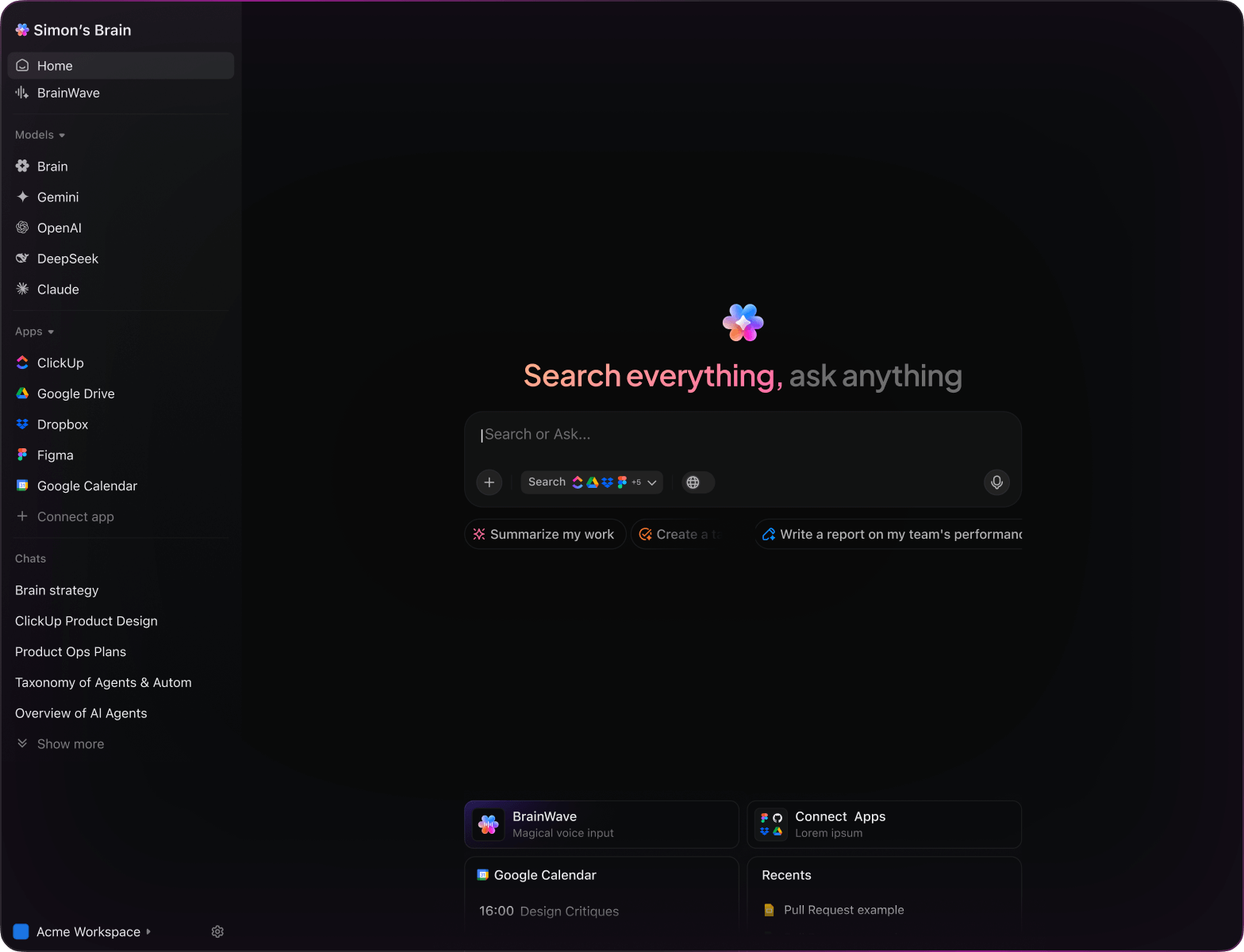AI Mystery Writing
Top AI Prompts for Crafting Mysteries
Uncover gripping plots, organize your story elements, and elevate your mystery novels effortlessly with ClickUp Brain.
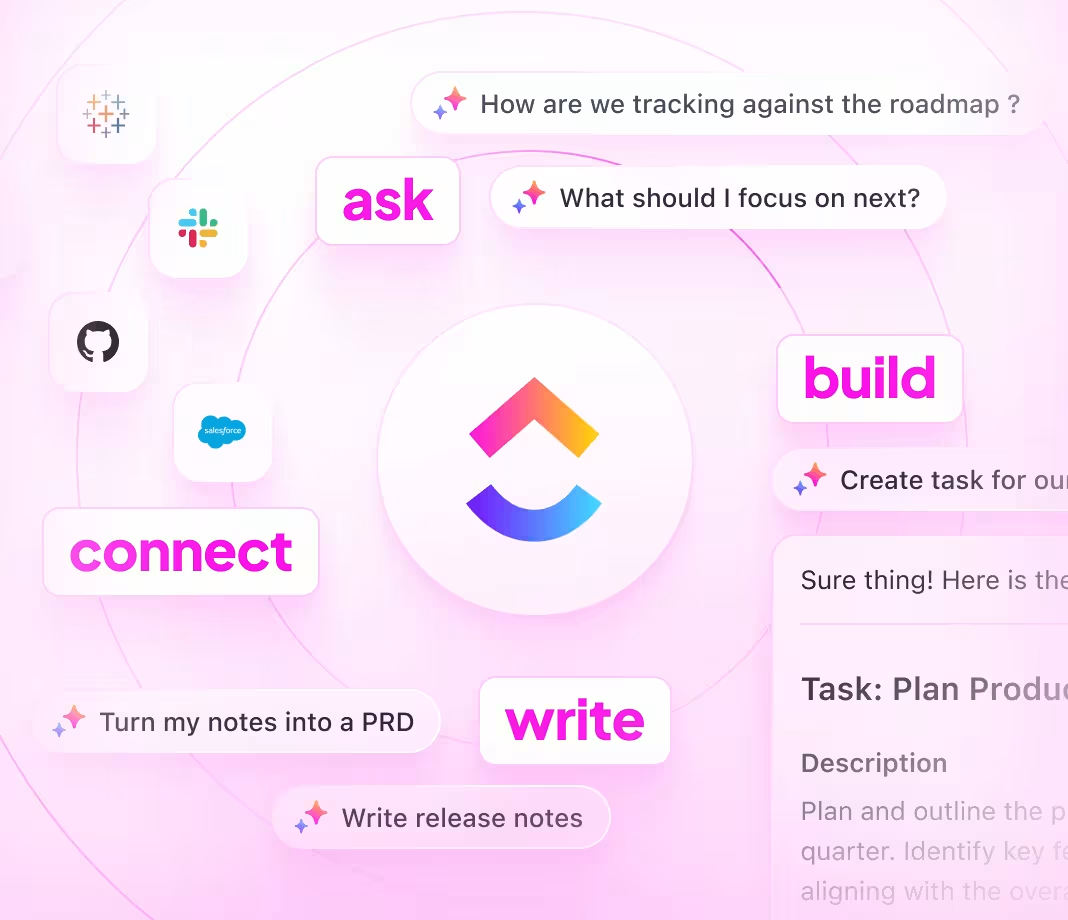
Trusted by the world’s leading businesses
AI in Mystery Writing
How AI Prompts Revolutionize Mystery Writing Workflows
Crafting compelling mysteries isn’t only about the final plot twist—it’s about weaving intricate clues, character arcs, and timelines behind the scenes.
From brainstorming story ideas to outlining chapters, developing characters, and managing revisions, mystery writing involves juggling numerous elements—and a mountain of notes, drafts, and deadlines. That’s why AI prompts have become invaluable.
Writers and teams now rely on AI to:
- Quickly uncover genre tropes and inspiration
- Generate character profiles, plot outlines, and dialogue snippets with minimal effort
- Break down complex story arcs and pacing structures
- Transform scattered notes into clear chapter plans, checklists, or writing tasks
Integrated into familiar tools—like documents, brainstorming boards, and project trackers—AI in platforms such as ClickUp Brain goes beyond simple assistance. It seamlessly converts creative sparks into structured, manageable writing workflows.
ClickUp Brain Compared to Conventional AI
Why ClickUp Brain Stands Out
Designed to understand your mystery writing projects deeply, ClickUp Brain lets you focus on crafting stories instead of repeating details.
Standard AI Assistants
- Constantly switching apps to collect background info
- Repeating your plot points with every new prompt
- Responses that miss the nuances of your story
- Hunting through multiple platforms for notes
- Interacting with AI that only responds, not understands
- Manually toggling between different AI engines
- Just another add-on in your browser
ClickUp Brain
- Instantly accesses your story outlines, character bios, and team notes
- Keeps track of your narrative goals and past inputs
- Provides detailed, relevant suggestions tailored to your mystery
- Searches across all your writing resources at once
- Supports voice commands with Talk to Text
- Automatically selects the ideal AI model: GPT, Claude, Gemini
- Available as a native app on Mac & Windows for optimal performance
Creative Writing Prompts
15 Powerful AI Prompts for Mystery Writers
Elevate your mystery storytelling—plot twists, character arcs, and suspense crafted with ease.

List 5 compelling plot twists for a detective story set in a small coastal town, inspired by the ‘Mystery Outline 2024’ doc.
ClickUp Brain Behavior: Analyzes narrative elements and themes from the linked document to propose fresh plot twist ideas.

What character types are gaining popularity in contemporary mystery novels featuring amateur sleuths?
ClickUp Brain Behavior: Gathers insights from internal genre studies; Brain Max can supplement with relevant external literary trends if accessible.

Create a scene outline emphasizing suspense and atmosphere, referencing notes from ‘Noir Techniques’ and prior story drafts.
ClickUp Brain Behavior: Extracts stylistic cues and narrative techniques from linked files to generate a detailed scene framework.

Summarize pacing approaches used in ‘The Silent Witness’ and ‘Dark Alley’ using our ‘Pacing Analysis Q1’ doc.
ClickUp Brain Behavior: Pulls comparative data and narrative insights from internal documents to produce a concise evaluation.

Identify top misleading clues and plot devices from recent psychological thriller manuscripts and research notes.
ClickUp Brain Behavior: Scans documents for recurring deceptive elements and summarizes their narrative impact.

From the ‘Story Consistency Guidelines’ doc, create a checklist ensuring plot and character coherence.
ClickUp Brain Behavior: Extracts key criteria and formats them into an actionable checklist within a task or document.

Identify recent storytelling methods enhancing suspense from post-2023 author interviews and writing workshops.
ClickUp Brain Behavior: Detects patterns and highlights novel approaches from linked research and notes.

From the ‘Reader Feedback Q2’ doc, summarize popular preferences regarding mystery story conclusions.
ClickUp Brain Behavior: Analyzes survey data to identify common themes and expectations among readers.

Write concise, impactful dialogue examples for a suspect interrogation, using tone guidelines from ‘VoiceStyle.pdf’.
ClickUp Brain Behavior: References tone and style documents to suggest varied dialogue options fitting the scene.

Highlight recent changes in forensic science laws and their implications for mystery plot realism.
ClickUp Brain Behavior: Reviews compliance and legal documents to provide relevant updates; Brain Max can access public legal databases if linked.

Create placement and detail guidelines for describing city environments, referencing style guides and setting notes.
ClickUp Brain Behavior: Extracts descriptive standards and formatting rules from internal documents to form a writing checklist.

Using law enforcement manuals and ‘Investigation Protocols’ folder, compile a checklist for realistic detective work.
ClickUp Brain Behavior: Identifies procedural steps from readable PDFs and organizes them by investigation phase or priority.

Analyze how unreliable narrators are employed across ‘Whispered Lies,’ ‘Hidden Truths,’ and ‘The Last Alibi’ using internal analyses.
ClickUp Brain Behavior: Summarizes narrative techniques and effects into a clear, comparative format (table or brief).

What new thematic trends have appeared in mystery novels since 2022?
ClickUp Brain Behavior: Synthesizes themes from internal research notes, author interviews, and recent publication summaries.

Summarize frequent story inconsistencies and pacing issues reported in reader reviews and feedback folders.
ClickUp Brain Behavior: Extracts and prioritizes critical points from surveys, comments, and tagged tickets to inform revisions.
Craft Mystery Stories Quicker with ClickUp Brain
Cut down rewrites, unify your team, and create richer narratives using AI-driven story workflows.





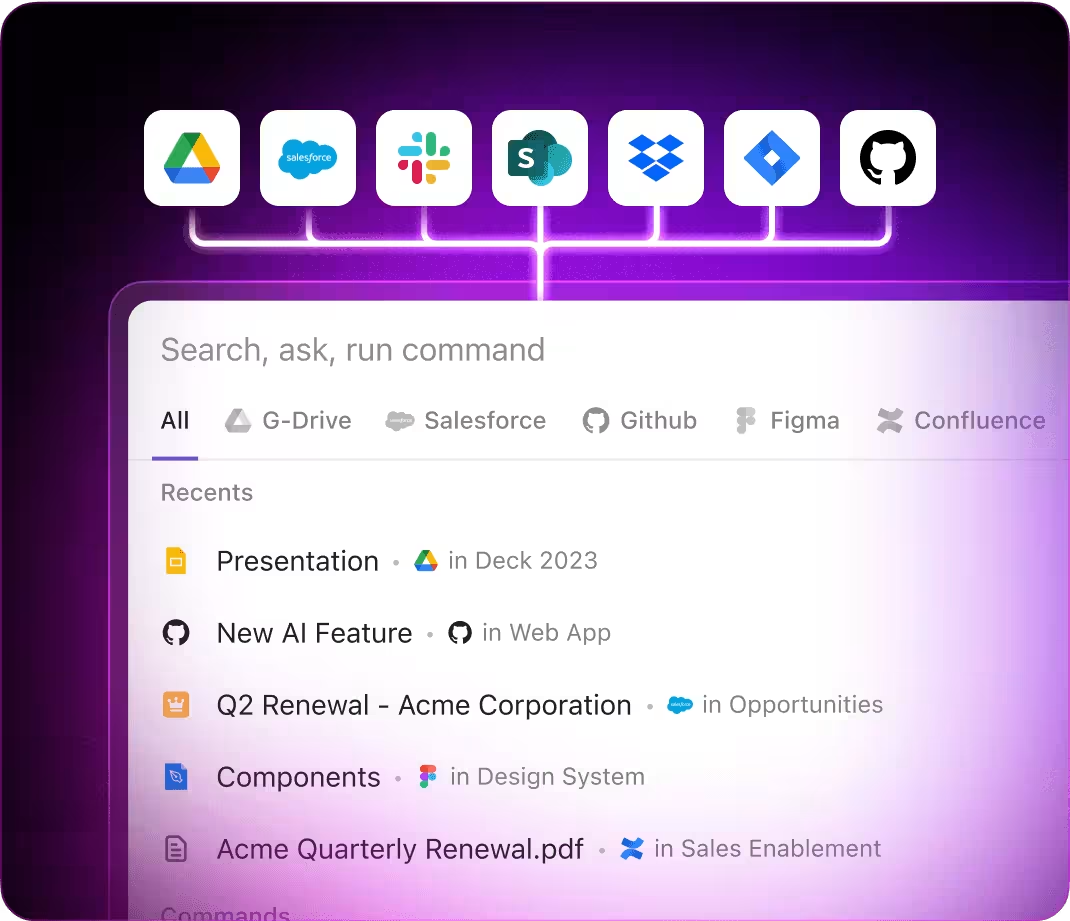
AI Prompts Tailored for Mystery Writing with ClickUp Brain
Discover How ChatGPT, Gemini, Perplexity, and ClickUp Brain Enhance Mystery Story Development
ChatGPT Mystery Writing Prompts
- Outline a 5-point plot summary focusing on suspense elements in a detective novel.
- Compose a gripping book blurb highlighting the protagonist's unique investigative skills.
- Suggest 3 alternative motives for the antagonist and explain their impact on the story's tension.
- Draft a scene-by-scene breakdown for introducing a mysterious character in a thriller.
- Compare the last 3 chapters and summarize key unresolved clues to build reader anticipation.
Gemini Mystery Writing Prompts
- Generate 3 distinct settings for a crime scene based on classic noir themes.
- List innovative plot twists that subvert typical mystery tropes and engage readers.
- Create a mood board description for a suspenseful atmosphere, emphasizing lighting, tone, and pacing.
- Propose character relationship dynamics for a 5-person detective team, ranked by conflict potential.
- Develop a comparison chart of three narrative perspectives, highlighting their effect on suspense and reader engagement.
Perplexity Mystery Writing Prompts
- List 5 classic mystery archetypes and rank them by popularity in modern fiction.
- Provide a comparison of detective methodologies used in famous novels, focusing on logic, intuition, and forensic science.
- Summarize current trends in mystery subgenres and their reader demographics.
- Generate a list of 5 innovative clues for a locked-room mystery and rank them by originality.
- Compare past bestselling mystery plots and extract 3 key storytelling techniques for success.
ClickUp Brain Mystery Writing Prompts
- Transform this brainstorming session into a prioritized list of plot development tasks with deadlines.
- Summarize character backstory discussions and assign follow-up research tasks to team members.
- Analyze annotated manuscript notes and generate a checklist for plot consistency reviews.
- Create a task list from editorial feedback on pacing and suspense, including priority levels.
- Summarize beta reader comments on mystery elements and produce actionable revisions in ClickUp.
How ClickUp Supports
Transform Early Thoughts Into Polished Plots
- Convert scattered story fragments into detailed outlines swiftly.
- Generate new plot twists inspired by previous mysteries.
- Build custom templates to accelerate your writing process.
Brain Max Boost: Quickly explore past drafts, character notes, and research materials to fuel your next storyline.
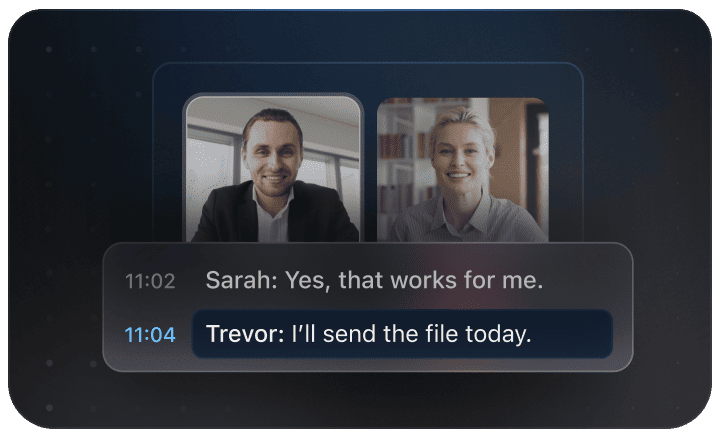
Why Choose ClickUp
Accelerate Your Mystery Writing Process
- Break down intricate plot ideas into manageable story beats.
- Transform brainstorming notes into assignable writing tasks.
- Automatically create chapter outlines and progress summaries without extra effort.
Brain Max Boost: Instantly access previous story arcs, character details, or plot twists across your projects.
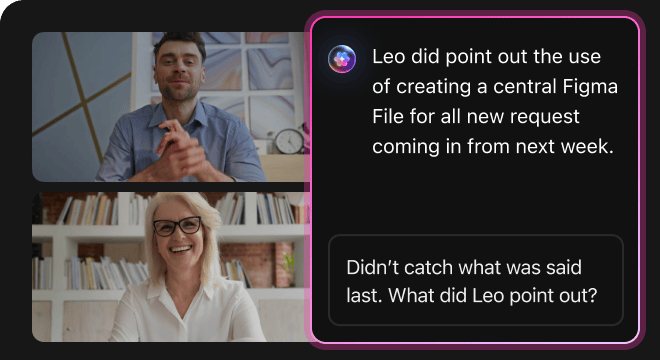
AI Advantages
How AI Prompts Elevate Every Phase of Mystery Writing
AI prompts ignite creativity and help craft gripping, original mysteries.
Craft Intriguing Plots Quickly
Writers explore diverse storylines faster, sharpen plot twists, and overcome writer’s block.
Develop Complex Characters with Depth
Build rich, believable personas that captivate readers and enhance story engagement.
Spot Plot Holes Early
Identify inconsistencies before drafts advance, improving story coherence and pacing.
Align Your Writing Team Effortlessly
Enhances collaboration, clarifies narrative direction, and accelerates editorial decisions.
Innovate Your Mystery Craft
Inspire fresh ideas, experiment with unique twists, and keep your stories unpredictable.
Integrated AI Support Within ClickUp
Transforms AI suggestions into actionable writing tasks, moving your project forward smoothly.
Boost Your Mystery Writing Flow
Cut down plot holes, enhance character arcs, and craft compelling narratives with AI-powered support.





